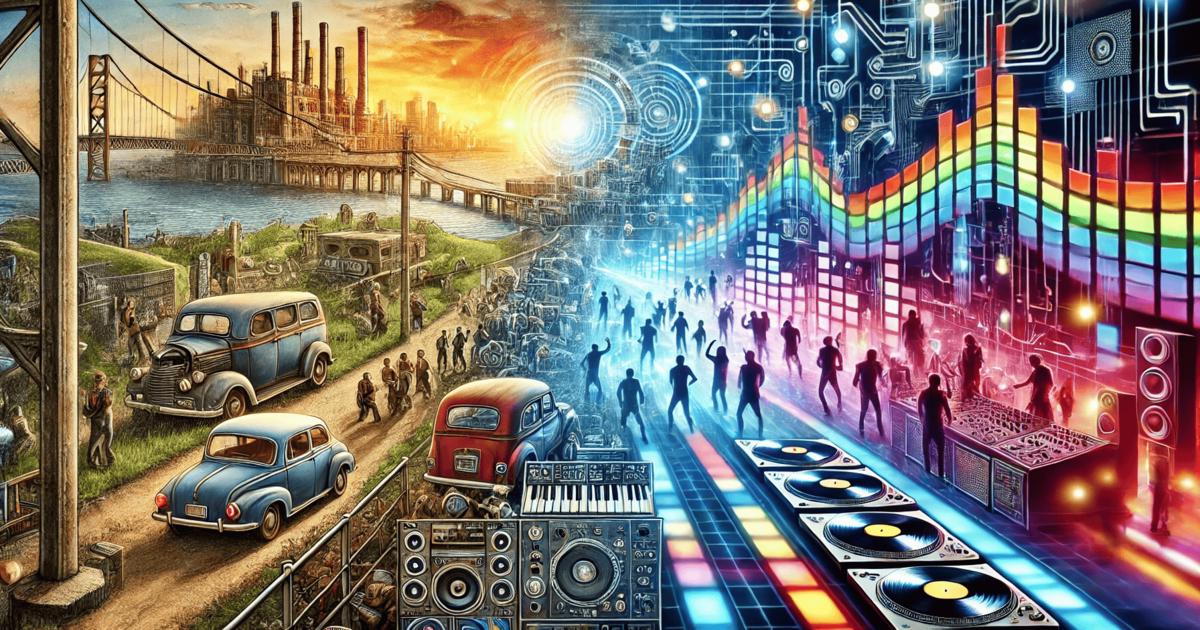The Complete History of Techno Music Explained
The Origins and Influences (1970s–1980s)
The history of techno music begins long before the word “techno” was used. In the 1970s, early electronic pioneers like Karlheinz Stockhausen started to experiment with synthetic sounds, laying the groundwork for new directions in music. Around the same time, the German group Kraftwerk developed a minimalist, machine-driven, and futuristic style. Their influence reached far beyond Europe, inspiring musicians who would later form the core of techno’s first wave.
📌 Viberate Analytics: Professional music analytics suite at an unbeatable price: $19.90/mo. Charts, talent discovery tools, plus Spotify, TikTok, and other channel-specific analytics of every artist out there.
This new style grew out of a mixture of cultures and genres. European electro-pop and disco combined with African American traditions such as funk and house. The fusion gave rise to a unique sound that carried both rhythm and experimentation, signaling the arrival of something completely new.
Detroit: The Birthplace of Techno (Mid-1980s)
Detroit became the cradle of techno in the mid-1980s. The city’s post-industrial decline left abandoned buildings and a sense of social unrest, which provided fertile ground for underground creativity. Out of this environment came three young visionaries known as the Belleville Three — Juan Atkins, Derrick May, and Kevin Saunderson. They not only defined the sound but also coined the term “techno.”
Juan Atkins’ early project Cybotron, followed by his solo work as Model 500, set the stage for the genre. Their tracks combined mechanical beats with futuristic themes, creating music that was as much about machines as it was about people. Detroit clubs like the Music Institute became the central spaces for spreading this music. Later, collectives such as Underground Resistance gave techno an even stronger identity, connecting it to social consciousness and futuristic ideals.
Europe Embraces Techno (Late 1980s–1990s)
By the late 1980s, techno had crossed the Atlantic. A key turning point came in 1988 with the release of the compilation Techno! The New Dance Sound of Detroit, which introduced the style to UK audiences. Soon after, Europe began shaping its own scenes.
Nowhere did techno grow faster than in Berlin. The fall of the Berlin Wall in 1989 left countless abandoned spaces, which soon became home to underground parties. Clubs like Tresor and Planet became legendary, mixing music with the spirit of freedom and change. Berlin quickly became a global capital of techno. At the same time, artists traveled back and forth between Detroit and Europe, keeping the cultural exchange alive and pushing the genre into new directions.
Subgenres and Evolution (1990s–2000s)
As techno spread, it evolved into many subgenres. Acid techno brought in squelchy 303 basslines, while hardcore pushed tempos and intensity. Ambient and dub techno introduced deeper, more atmospheric layers. Minimal techno, supported by artists such as Richie Hawtin, Robert Hood, and Carl Craig, reduced the sound to its essentials, emphasizing space and rhythm.
By the late 1990s and early 2000s, techno was no longer confined to underground raves. It became a staple at large festivals, yet it kept a strong underground spirit. At the same time, its influence extended into the wider EDM scene, shaping countless electronic music genres.
Why Techno Matters
The history of techno music is not just about sound but also about culture. In Detroit, it became a force that brought people together across racial and social divides in a city marked by segregation. Globally, techno pushed the limits of sound design and production, inspiring entire generations of electronic artists.
Today, techno remains a symbol of innovation and freedom. It is music born from struggle and imagination, and it continues to represent underground culture at its most creative. From Stockhausen’s early experiments to Berlin’s all-night clubs, the story of techno shows how a sound can grow into a global movement while never losing its roots in experimentation and community.
Source of music data: Viberate.com

Premium music analytics, unbeatable price: $19.90/month
11M+ artists, 100M+ songs, 19M+ playlists, 6K+ festivals and 100K+ labels on one platform, built for industry professionals.




